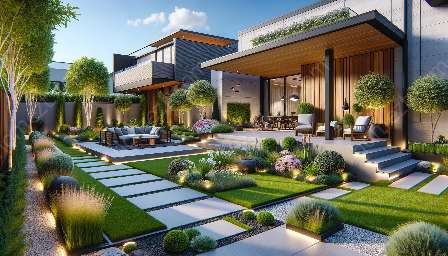Introduction to Garden Design
Garden design is an art form that involves creating a harmonious outdoor space that combines aesthetics, functionality, and sustainability. Whether you have a small backyard, a spacious garden, or a cozy patio, thoughtful garden design can transform your outdoor environment into a beautiful and inviting retreat.
Importance of Garden Design
Garden design goes beyond mere decoration; it encompasses the practical and environmental aspects of outdoor living. A well-designed garden not only enhances the visual appeal of your landscape but also contributes to the overall functionality of your yard and patio. By carefully planning and implementing a cohesive design, you can create a space that reflects your personal style while maximizing the use of outdoor areas.
Elements of Garden Design
When approaching garden design, various elements need to be considered to create a cohesive and attractive outdoor space:
- Layout and Structure: The layout of your garden, including pathways, focal points, and seating areas, plays a crucial role in defining the overall design.
- Plant Selection: Choosing the right plants based on your climate, soil type, and desired aesthetic can significantly impact the visual appeal and sustainability of your garden.
- Hardscaping: Incorporating elements such as patios, decks, pergolas, or garden walls can add structure and functionality to your outdoor space.
- Lighting: Thoughtful lighting design can extend the usability of your yard and patio into the evening hours while creating an enchanting ambiance.
- Water Features: From fountains to ponds, water features can bring tranquility and visual interest to your garden design.
Garden Design and Landscaping
While landscaping generally refers to the modification of outdoor spaces with plants, hardscaping, and other features, garden design is a more specialized aspect that focuses on the artistic and functional arrangement of plants and structures within the landscape. Both landscaping and garden design play complementary roles in transforming outdoor spaces into visually stunning and practical environments. When combined effectively, landscaping and garden design create a cohesive and harmonious outdoor living area that enhances the natural beauty of your property.
Integrating Garden Design with Yard & Patio
When designing your garden, it’s essential to consider how it integrates with your yard and patio. The following tips can help you achieve a seamless transition and a harmonious overall design:
- Consider the practical use of your outdoor space, such as seating areas, dining spaces, and recreational areas, and ensure that the garden design complements these functionalities.
- Choose plants and hardscaping elements that harmonize with the existing features of your yard and patio, such as the architectural style of your home and the surrounding landscape.
- Pay attention to the flow and continuity of the design, ensuring that your garden seamlessly connects with the yard and patio to create a unified outdoor living environment.
- Utilize color, texture, and scale to create visual interest and cohesiveness across the entire outdoor space, including the garden, yard, and patio.
Conclusion
Garden design is a multifaceted endeavor that involves creativity, careful planning, and a deep understanding of natural elements. By integrating the principles of garden design with landscaping and the overall design of your yard and patio, you can create an outdoor oasis that reflects your style and enhances your quality of life. Whether you’re aiming for a tranquil retreat or an entertainment hub, thoughtfully designed gardens, in combination with well-planned yard and patio layouts, can elevate the beauty and functionality of your outdoor living space.



